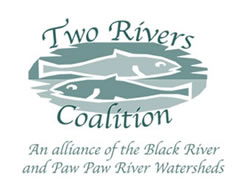Home>Our Work>Watershed Advocacy>Aquatic Buffers
Aquatic / Riparian Buffers
An aquatic buffer is an area along a shoreline, wetland, or stream where development is restricted or prohibited. The primary function of aquatic buffers is to physically protect and separate a stream, lake or wetland from future disturbance or encroachment.
General Information
Properly designed, buffers can provide stormwater management and act as a right-of-way during floods, sustaining the integrity of stream ecosystems and habitats. Technically, aquatic buffers are one type of conservation area, function as an integral part of the aquatic ecosystem, and can also function as part of an urban forest.
The three types of buffers are:
- Water pollution hazard setbacks, areas that may create a potential pollution hazard to the waterway. By providing setbacks from these areas in the form of a buffer, potential pollution can be avoided.
- Vegetated buffers that are any number of natural areas that exist to divide land uses or provide landscape relief.
- Engineered buffers, areas specifically designed to treat stormwater before it enters into a stream, shore or wetland.
There are ten key criteria to consider when establishing a stream buffer:
- Minimum total buffer width
- Three-zone buffer system
- Mature forest as a vegetative target
- Conditions for buffer expansion or contraction
- Physical delineation requirements
- Conditions where buffer can be crossed
- Integrating storm water and storm water management within the buffer
- Buffer limit review
- Buffer education, inspection, and enforcement
- Buffer flexibility.
In general, a minimum base width of at least 100 feet is recommended to provide adequate stream protection. The three-zone buffer system, consisting of inner, middle, and outer zones, is an effective technique for establishing a buffer. The zones are distinguished by function, width, vegetative target, and allowable uses. The inner zone protects physical and ecological integrity and is a minimum of 25 feet plus wetland and critical habitats. The vegetative target consists of mature forest, and allowable uses are very restricted (flood controls, utility right-of-ways, footpaths, etc.).
The middle zone provides distance between upland development and the inner zone and is typically 50 to 100 feet, depending on stream order, slope, and 100-year floodplain. The vegetative target for this zone is managed forest, and bike paths.
The outer zone functions to prevent encroachment and filter backyard runoff. The width is at least 25 feet and, while forest is encouraged, turf grass can be a vegetative target. Uses for the outer zone are unrestricted and can include lawn, garden, compost, yard wastes, and most storm water BMPs.
Van Buren County Drain Commissioner Site Development Rules - Procedures and Design Standards for Storm Water Management

